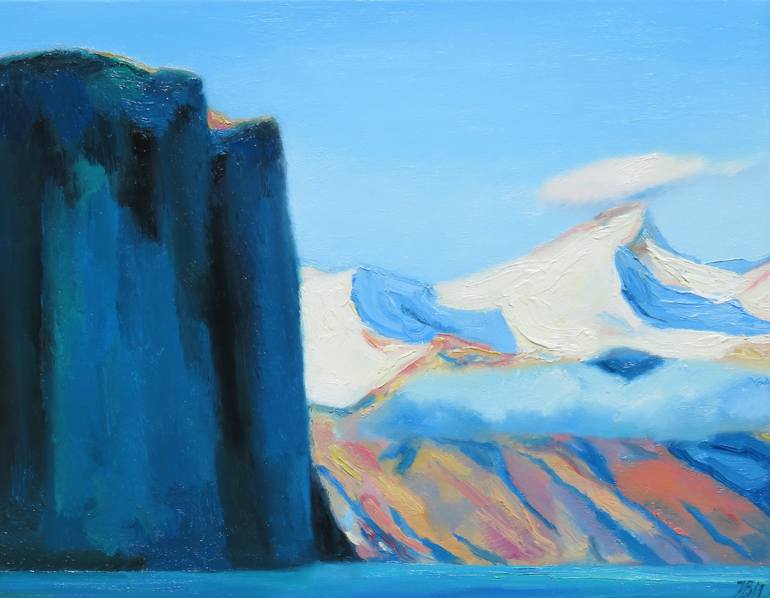Mysterious Love

When illusion chains unshackle,
I see that love is all about possessing ruling
Killing, acquiring and cheating
Where homes are ripped apart,
Hearts torn asunder
And universally common dreams
Broken in a million pieces.
And this is not ordered by natural law,
It is all of a man-made drama.
Silent and solemn,
While bubbles swirled around her,
Love came to her,
Not as a wall wave crashing
But as a spring of sweet waters
Overflowing with blessings
Every cell of her immaculate heart,
Fulfilling her unspoken desires
She saw his silhouette
In the waxing and waning moon,
The Victoria Falls, the Taj,
The pyramids, the Himalayas
The Arctic icebergs and the Vivikfjord Mountains
The elation of accomplishment and achievement.
She smiled the enigmatic Mona Lisa smile
And his beautiful words
Played charade in her tender ears
While his touches transmitted love
To her shivering heart,
So untouched, so unblemished.
She looked at the gnarled oaks
In a sea of silence
While the rippling breeze
Carried his body scent
Kindling her soul in constant jubilation
And fondling her emaciated body.
Her love for him
Is neither from seriousness nor frivolity,
Neither the soft touches nor the hot kisses,
It is not even the sexual pleasures
Close to the nothingness of Nirvana
It is simply mysterious love
Where they radiate together,
Their voices echoing gently
In the labyrinthine passages of time,
Their vagrant thoughts
Teasing and kissing each other
With a flow of dynamism
As they reach the pinnacle of their life.

Fjord -- Ieva Baklane
When David Livingstone "discovered" Mosi-oa-Tunya ("The Smoke That Thunders" in Lozi) in 1855 he named it Victoria Falls after the queen of the UK. On the Zambezi river border between Zambia and Zimbabwe, it is the world's largest sheet of falling water, based on its combined width of 1,708 meters (5,604 ft) and height of 108 meters (354 ft), but it is not the highest waterfall (Salto Ángel on the Rio Caroni in Venezuela is, at 3,230 ft, with an uninterrupted drop of 2,647 ft)or the widest (the Lbak Khaon in Lao is, at 35,376 ft, and is the main reason that the Mekong river is not fully navigable into China). Of the Victoria, Livingston said, "It had never been seen before by European eyes; but scenes so lovely must have been gazed upon by angels in their flight."
ReplyDeleteThe Taj Mahal ("Crown of the Palace") is often cited as one of the most beautiful buildings in the world. It was commissioned in 1632 by Mirza Shahab-ud-din Baig Muhammad Khan Khurram, the Mughal emperor Shah Jahan ("King of the World") to house the tomb of his 3rd (favorite) wife, Arjumand Banu (Mumtaz Mahal,"the Exalted One of the palace"), who died at 38 during the birth of her 14th child. Constructed on the Yamuna river in Agra, it was mainly completed in 1643, though work on the compound continued for another decade. The emperor worked closely on its design with Ustad Ahmad Lahori (the architect of the Red Fort in Delhi) and Mir Abd-ul Karim, the favorite architect of Shah Jahan's predecessor. It cost 32 million rupees (over $800 million) and employed 20,000 workers. In 1666, 8 years after his son deposed him, Shah Jahan was buried next to his wife. Rabindranath Tagore compared it to "a solitary tear suspended on the cheek of time."
Hundreds of Egyptian pyramids have been identified, but the most famous ones are at Giza (al-Jīzah), near Mn Nefer (Memphis), the capital of the 1st unified Egyptian state. The largest one was built as a tomb for 4th Dynasty pharaoh Khnum Khufu ("Cheops"). It was built ca. 2560 BCE and probably took vizier Hemiunu 10-20 years to complete. (A 20-year period means that 800 tons of stone had to be installed every day, and at least 12 blocks being put into place each hour.) Initially 146.5 m (482 ft) high, it was the world's tallest structure until ca. 1300, when the 160-m (520-ft) Cathedral Church of the Blessed Virgin Mary of Lincoln was completed in the UK. The 2nd-largest pyramid in the complex was built by Khufu's son Khafra ("Chephren"), who was probably also pharoah at the time the nearby Sphinx was built. The smallest is the tomb of Khafra's successor Menkaure (""Mykerinos"). Northwest of the Sphinx is the Heit al-Ghurab (Wall of the Crow), which is 200 m (656 ft) long, 10 m (32.8 ft) high, and 10 m thick at its base. The wall's gateway is topped by a 300-ton rock, the world's largest man-hewn stone.
The 2,400 km (1,500 m) Himalayan mountain range separates the Indian plains from the Tibetan plateau and contains over 50 peaks that exceed 7,200 M (23,600 ft), including the 8,848 m (29,029 ft) Mt. Everest (Sagarmatha in Nepali, Chomolungma in Tibetan), named in 1865 after a former surveyor general of India. The name of the mountain range itself is derived from the Sanskrit for "Abode of Snow." They are the personification of Himavath ("Frosty), the father of Ganga the river goddess and Parvati, the goddess of fertility, love, devotion, and divine power, the wife of Shiva. Himvath's consort was the daughter of Mt. Meru, the sacred 5-peaked mountain in the middle of the Earth which is the center of all the physical, metaphysical, and spiritual universes. At 1,082,000 km (672,000 mi), Mt meru is 85 times the diameter of the Earth.
Viksfjorden is a 7-km fjord that branches out from the Larviksfjorden, near Larvik. In some places it is only about 2 m wide. It may have been the site of Norway's 1st city, with a probable population of 400-600 people ca. 800.